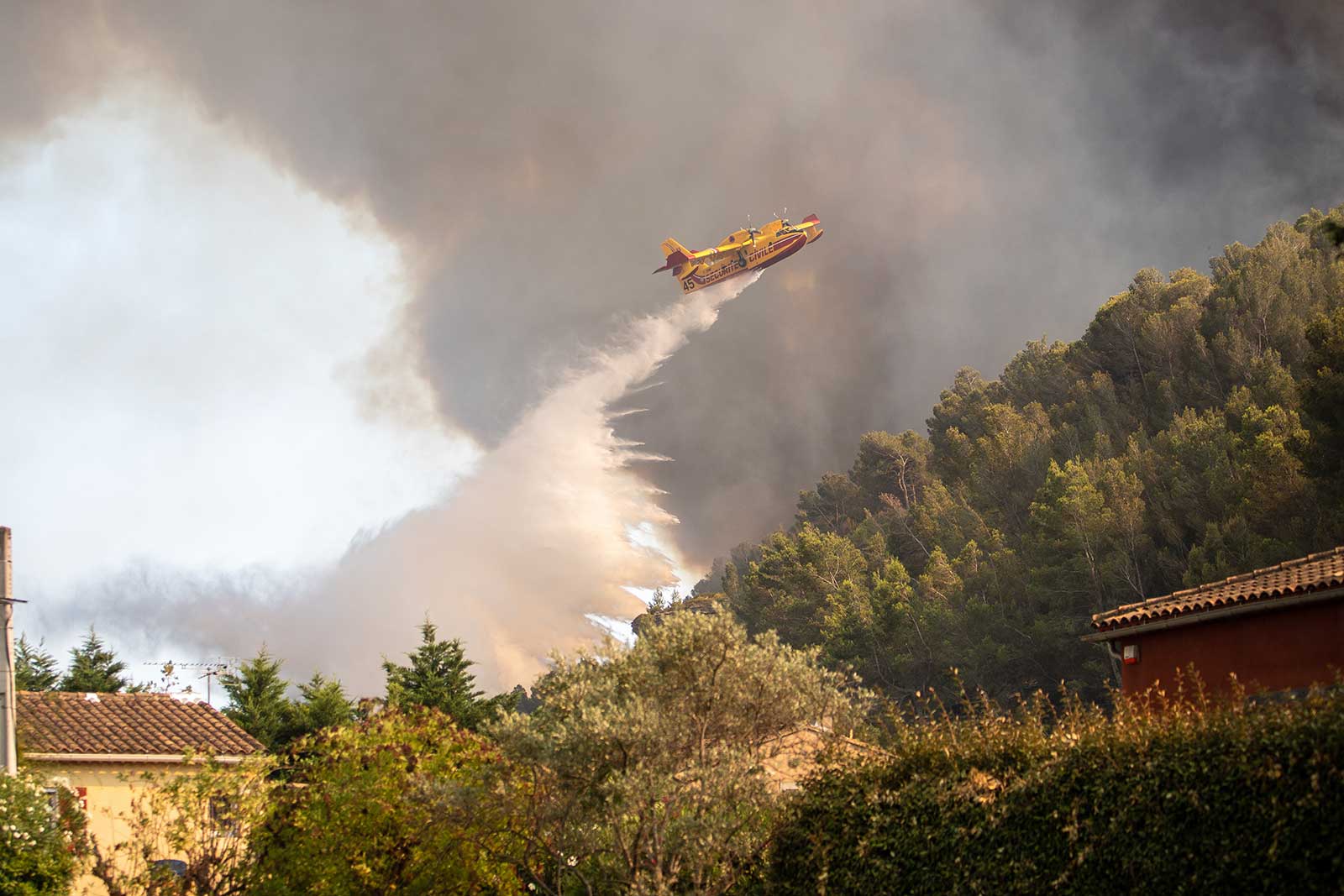It has been a hellish summer in Europe. In a way, worrying about how the 2022 vintage from your favorite wine region will taste seems rather trite at this point. Climate change has long seemed portentous; but seeing what has happened this summer in Europe confirms that it is happening now.
Fire have raged, glaciers have collapsed and many of the major rivers that serve as lifelines for agriculture and commerce have dried up. Individually, these events are not entirely new, but the scale and frequency of them is jarring to say the least. For those of us who follow the wine industry, Europe’s drought-ridden summer will shape policy, practices and the economies of wine production there for years to come, even in places that seemingly dodged the bullet in 2022.
What follows is a simple roundup of news articles, photos and videos to capture the breadth of events and give a broad-strokes view of the crisis as a whole. I’ll be following more specific impacts in the months and years to come, particularly how dwindling snowpack in the mountain ranges of Europe, and the scant water resources that follow, will impact viticulture, since that is the most pressing issue facing the regions I cover.
But I am also left with a profoundly personal question I cannot reconcile: how does my love of wine — particularly imported European wine — play a role in fueling the climate crisis? It has been on my mind for years, and I’ve been a little too scared of the answer to write about it, if I am being honest. I am curious how you wrestle with this question as well (comment below).
(Let’s also make this painfully clear: this is not a European wine issue; obviously, it is a global one).
I’ll update this page as the summer comes to an end (hopefully with less and less news to report). But look for essays and more coverage on climate change and the wine world in the coming months and years.
Italy
In Italy, the Po River has receded to a point where you can walk across it “without wetting one’s feet.” With it, the Adriatic has encroached 12 miles inland and killed crops with its salty kiss.
In July, fires raged in the Carso region straddling the Friuli-Slovenia and in various locations around Tuscany including Lucca and Montalcino. In hindsight, ominous signs of this drought were obvious when I visited in March and April. The snowpack in the Italian Alps was already well gone when I flew over, and the rainy days I encounter in Chianti Classico were the first precipitation in more than 100 days.
Long ago Virgil called Italy’s River Po “fluviorum rex” or “the king of rivers.” Today, amid epic drought, there are places you can walk across it. https://t.co/H6I2MrSkxA
— Bill McKibben (@billmckibben) August 12, 2022
“The landscape had changed a lot.” Drought has reduced Italy’s Lake Garda to near its lowest level ever recorded, exposing swaths of previously underwater rocks. https://t.co/SGV5F1dhab pic.twitter.com/PhDaGVKSrg
— The Associated Press (@AP) August 14, 2022
View this post on Instagram
View this post on Instagram
France
In Bordeaux, significant tracts of the largest manmade forest in Europe — Les Landes — has burned with frightening speed. Estimated at 2.5 million acres in size, this piney barrier between vines and sea has played an integral role in defining Bordeaux’s terroir. Now, a race to save the vintage from smoke taint gives the area yet another parallel (albeit an unwelcome one) to Napa.
It is important to note that Les Landes is a fragmented tract of land, not a contiguous 2.5 million acres of forest. Comparing the impacts and size of these fires to what we experience in North America is an apples-to-oranges comparison.
Bordeaux tonight.
Fire front is 3 kilometers long. 6,200 hectares already gone and 10,000 people have been evacuated.
A63 motorway on fire. pic.twitter.com/3iFlO8OiK5
— Dave Throup (@DaveThroup) August 10, 2022
Arson suspected as French wildfire reignites.
A wildfire thought to be under control in southwest France has reignited amid a record drought and extreme heat, possibly the result of arson, officials sayhttps://t.co/L3g7rKq2R0 pic.twitter.com/JJ2QYZKr1j
— AFP News Agency (@AFP) August 11, 2022
Wondering how deep Europe’s drought is?
Here’s the Loire river today, east of Nantes, via @Desomag pic.twitter.com/u17Bp2NKCM— Bill McKibben (@billmckibben) August 11, 2022
The Loire is alarmingly low, however, as locally based wine writer Chris Kissack points out, this portion of the river is often sandy. Some context:
The other half south of the island is more narrow and often looks ‘healthier’. Not dismissing the low levels the Loire is experiencing, and it’s definitely a great picture, but it’s not *the whole* picture. 2/2
— Chris Kissack (@chriswinedoctor) August 16, 2022
Germany
One year after devastating floods tore the Ahr River Valley in Germany, upending the region’s entire wine industry, comes a baking summer of heat domes and no rain. Like the Po, the Rhine River has effectively dried up, but the consequences are being felt in a different but no less alarming way in Germany. The Rhine is an essential shipping corridor, and without enough water, everything grinds to a halt. With the war in Ukraine already pinching gas supplies, Germans are rightfully worried about what’s to come.
View this post on Instagram
VIDEO: The Rhine river in Germany has fallen below a key waterline level used as a reference for judging its accessibility for shipping. pic.twitter.com/STF0etJd3I
— AFP News Agency (@AFP) August 15, 2022
Hunger Stone
The recent droughts in Europe made visible the Hunger Stones in some Czech & German rivers. These stones mark desperately low river levels that would forecast famines.
This one, in the Elbe river, is from 1616 & says: “If you see me, cry”. pic.twitter.com/IDQ5mY4yV8— A Beautiful Culture (@ABeautifulCult1) August 15, 2022
Top image: Canadair responding to a forest fire in France. ©illustrez-vous via Adobe Stock
